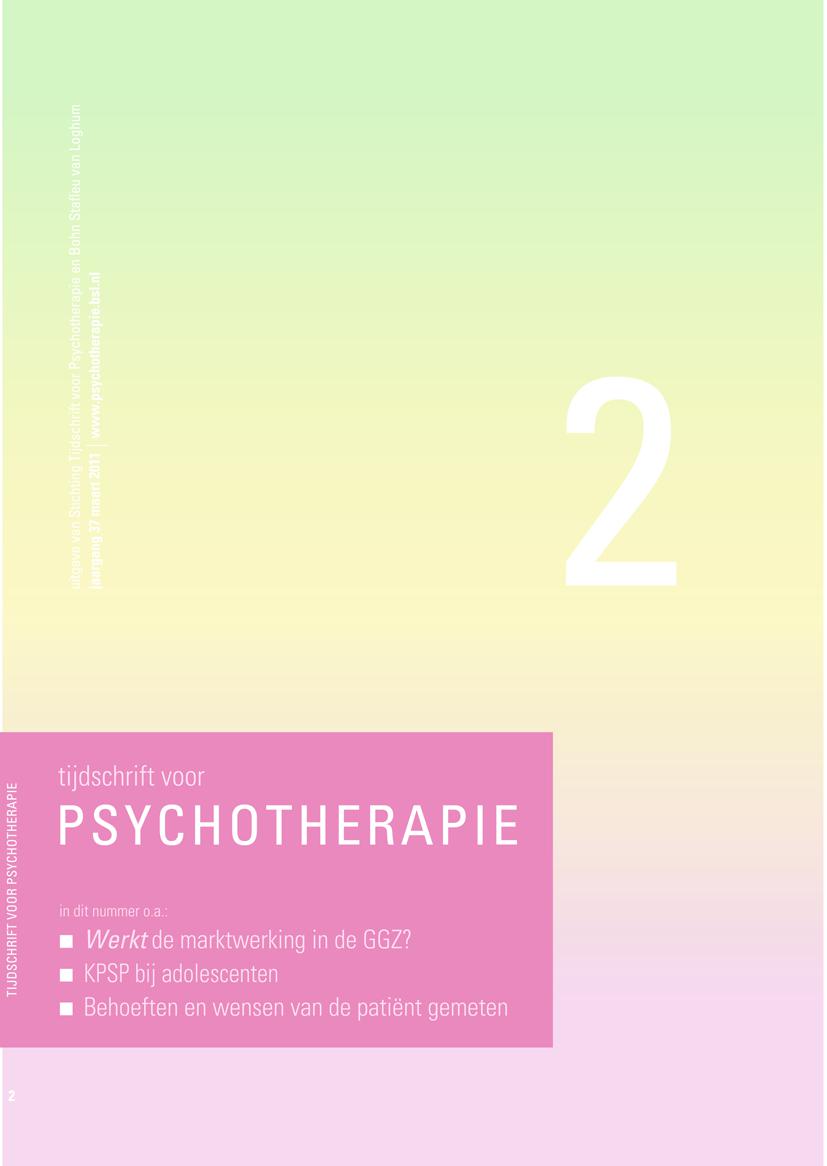The transition of a delivery market to a demand driven market in the Dutch mental health system
| • |
In 2005, after a discussion of more than twenty years, a system of free market was introduced in the Dutch somatic health
care. One year later, the cure sector of mental health care followed. Since that moment, health insurances and health providers
have to negotiate with each other about mental health care services. Theoretically, a purchasing or selling market in health
care was built, but laws and rules hinder real competition. Therefore, the original aims of free market competition in health
care – the value based competition on results, – were hardly reached.
|
Short-term psychoanalytic supportive psychotherapy for adolescents
L.M. Dil2 H.L. Van2
| (2) |
| • |
Depressive disorders are highly prevalent in adolescents. Two case reports illustrate that short-term psychoanalytic supportive
psychotherapy (SPSP) can be appropriate in the treatment of depression within this group. These reports focus on relational
patterns and analyse the dynamics that can emerge during SPSP. Adolescence is a turbulent phase in life with a multitude of
potentially challenging situations, in which the experiences and insight gained through therapy can help to achieve a positive
outcome.
|
Applying a simple method to assess patients’ treatment requests and their fulfillment
Anton Hafkenscheid3 Arend Veeninga3
| (3) |
| • |
This study proposes a simple method for the analysis of patients’ pretreatment requests and needs, compared with the fulfillment
of these requests and needs over the course of treatment. Using the adapted Dutch translation of the Patient Request Form
(PRF), 592 Dutch psychiatric outpatients rated what they wanted from treatment before their therapy actually started. One
year later 142 patients rated the extent to which their requests and needs concerning treatment were fulfilled at that point
in time. The subjective pretreatment relevance of requests widely varied. Some requests (e.g., ‘Insight’) were important for
many patients, whereas other requests (e.g., ‘Getting medication’) were rather exceptional. Disappointingly, most requests
and needs were only satisfied for a minority of the patient group one year after they had applied for treatment.
We conclude that therapists should become more aware of patients specific preferences and needs regarding treatment. Some
other implications of the findings are discussed.
|

